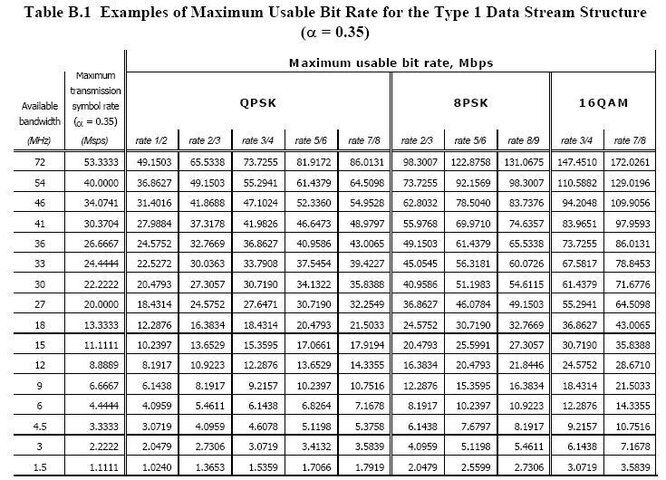goaliebob99 said:did you all see this by any chance.. things that make you go hummmmm
ESPN2 HD<BR>Transport Stream ID: 406 (0x0196) <A HREF="#nit_406">129.0W 12.297 L 21500 7/8 16QAM (DVB-DNG)/QPSK (Turbo)
The broadcom chip set supports 16QAM but I am surprised they could even attempt to get the FEC so low at 7/8... Thought it was 3/4 max... This is in excess of 69 Mbit/sec...



